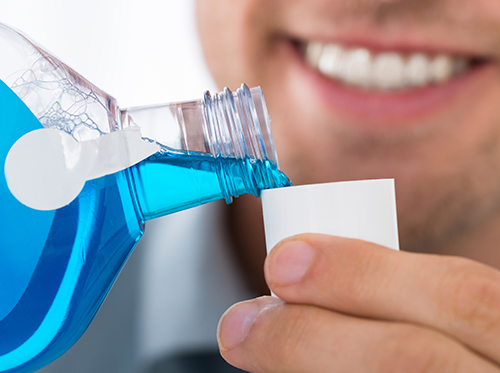March 17th, 2021

On March 17, everyone has a little Irish in them. St. Patrick’s Day is a joyous celebration of Irish heritage. The holiday originated as a commemoration of Saint Patrick, who brought Christianity to Ireland. The saint arrived in Ireland in 432 and earned the reputation of a champion of Irish Christianity. March 17th, the day of St. Patrick’s death, has been commemorated by the Irish for over 1,000 years. St. Patrick’s Day is still observed as a religious feast day by several Christian denominations, but it is better known in the public imagination as a rich celebration of Irish culture.
St. Patrick’s Day has been an official public holiday in Ireland since 1903. Each year, the Irish celebrate with a several-day festival that includes theater performances, music, fireworks, and festive parades. The celebration is also a public holiday in Northern Ireland, Montserrat, and Newfoundland and Labrador. In other parts of the world with heavy Irish populations, it is an unofficial celebration of Irish heritage. Parts of Great Britain, Canada, Argentina, South Korea, Switzerland, New Zealand, the United States, and Australia commemorate the holiday each year. Typical celebrations in these countries include drinking green beer, wearing green, eating traditional Irish foods, parades, and shamrock decorations.
Many people, Irish and non-Irish alike, take part in the “wearing of the green” on St. Patrick’s Day. In fact, the color originally associated with Saint Patrick was blue. His use of shamrocks to explain the Holy Trinity to the Irish made the green clover emblematic of the holiday, leading to the traditional green attire worn by thousands on St. Patrick’s Day. Other little-known facts about St. Patrick’s Day include the following:
- Each year, the United States and Ireland face off in a rugby competition called the “St. Patrick’s Day Test.”
- Montreal celebrates the holiday with an annual parade, which has been held each year since 1824. The Montreal city flag even features a shamrock in its corner, as a nod to its Irish heritage.
- The Guinness World Records named St. Patrick’s Day the “Friendliest Day of the Year.”
- Along with Valentine’s Day, St. Patrick’s Day is one of the most widely celebrated saint’s day in the world.
No matter your cultural heritage, St. Patrick’s Day is a great time to let loose and celebrate your inner Irish-ness! Don your greenest attire and exclaim “Erin go Bragh!” (Ireland forever!) to everyone you meet. From Dr. Pohl - have a great St. Paddy’s day!
March 10th, 2021

Part of the charm of your child’s smile is those delicate, diminutive baby teeth. We enjoy those smiles while we can, because soon enough, primary teeth make way for the adult teeth that will last your child a lifetime. So you might be surprised if Dr. Pohl and our team recommend a crown for your child’s baby tooth. Is this procedure necessary when the tooth is going to fall out eventually anyway?
Yes, it really is. If a primary tooth is lost before its normal lifespan, several problems can arise.
- Biting and chewing—a full set of baby teeth is best for proper chewing and digestion. And chewing also helps develop face and jaw muscles.
- Speech development—primary teeth help guide speech production and pronunciation.
- Spacing—a baby tooth serves as a place holder for the adult tooth waiting to replace it. If a primary tooth is lost too early, teeth may drift from their correct location and cause overcrowding or misalignment.
When is a Crown Necessary?
The enamel in a baby tooth is thinner than the enamel found in adult teeth, and a cavity can spread quickly throughout a tooth. Within a short period, the tooth’s structure might be too weak for a regular filling. Sometimes the pulp inside the tooth becomes injured or infected and an endodontic treatment is necessary to remove pulp tissue from inside the tooth. The interior will be filled, but the delicate enamel surrounding it will be fragile. Or an accident can leave a tooth fractured or broken, but still vital.
In each of these cases, a crown will protect the tooth from further decay or damage, and will allow the tooth to function normally until an adult tooth is ready to replace it.
What Types of Crowns are Available?
By far the most common choice for a primary tooth is a stainless steel crown. These crowns are prefabricated and can be fitted snugly to your child’s individual tooth. They are easy to place, less expensive than other crown alternatives, and will last until the tooth is ready to fall out in its proper time. If your child suffers from a metal allergy, or a more natural looking crown is necessary, talk to us about other possible options during your appointment at our Crescent Springs office.
Sure, preserving a baby tooth that was never designed to be permanent seems contradictory. But saving a tooth that helps your child develop proper eating habits, speech production, and correct adult tooth alignment? Those are benefits that will last a lifetime.
March 3rd, 2021

Capturing the Moment
At Buttermilk Dentistry we know that just about anyone who has taken on the challenge of planning her own wedding could tell you how important the little details can be. Things like having complementary colors, the right location, show-stopping flowers, and delicious food are all a big part of planning your spring wedding. Another little detail that has a big "I do" related role? Your smile.
Whether you’re the bride, or an attendant, looking your best when you tie the knot (or help someone tie the knot) is essential. If your teeth aren’t ready to make an entrance, turning to one of the many available teeth whitening solutions is a great option.
Reliable Solutions
Before the wedding day arrives, you should take your smile into consideration. If diet and daily wear-and-tear have caused your teeth to lose their original luster, our team can help! In-office procedures do cost more than kits you use at home, but with an in-office treatment, you benefit from a professional taking proper care of your teeth.
In addition, relying on our office to handle teeth whitening before the wedding can give you access to trustworthy advice on how to keep your teeth looking their best for a longer period of time. It’s common for someone experienced in assisting people with their oral health to suggest investing in an in-office whitening technique and then following up with a teeth-whitening kit at home.
This is a season of new beginnings and beauty. Take the time to bring out your most beautiful smile before the big day. Don’t let your smile hold you back on your wedding. With our in-office teeth whitening, you can be sure that you’ll be more confident and comfortable interacting with friends and family. So remember, when in need of some quality oral care in Crescent Springs to think of Dr. Pohl!
February 24th, 2021

A solid oral health routine begins with daily brushing, flossing, and rinsing. Without a consistent oral health regimen, you may begin to experience tooth decay and bacterial infections. Few patients ask Dr. Pohl about different mouthwash options, so we’ve put together a list of the conditions that mouthwashes can treat. This should help you decide which oral rinse would be best for you.
Gum Health
Antiseptic mouthwashes reduce large amounts of bacteria on and near the gum line and generally help to decrease your chances of developing gingivitis. The key ingredients of antiseptic mouthwashes are antibacterial and antimicrobial items. Antiseptic mouthwash is a preferable option if you are concerned about the general gum health of your mouth.
Fluoride
Fluoride is a great tool for preventive tooth decay treatment. It prevents tooth decay and is great for oral health in general because it kills germs that can live in your mouth. Fluoride also builds stronger teeth. If you’re a bottled water drinker, Dr. Pohl may recommend that you purchase a simple fluoride rinse to use after brushing.
Bad Breath
Fluoride mouthwash can be used to fight any bad breath issues you may be facing. It’s designed to combat any bacteria that might be building up in your mouth. Most mouthwashes will help eliminate bad breath, but some are specifically designed to address this difficult problem. If you feel as though this might be turning into a chronic problem, please contact Dr. Pohl to discuss other options that would be effective for treating your symptoms.
American Dental Association (ADA Approval)
The ADA reviews all mouth rinses for safety measures and to prove effectiveness. Any mouthwash approved by the ADA has met strict guidelines according to whether the manufacturer’s claims are supported with scientific evidence. If you’re looking for a quality mouthwash, look for one that has the ADA seal of approval to ensure you have a great rinse for your mouth.
Considerations
When you’re trying to decide which mouthwash to pick, contact our Crescent Springs or ask Dr. Pohl during your next appointment. If you experience a burning sensation in the soft tissues of your mouth, be sure to discontinue use immediately. Avoid letting children under age six use a mouth rinse, and be sure to keep all mouthwashes out of the reach of children, because they contain alcohol and other substances that could be harmful.







 Website Powered by Sesame 24-7™
Website Powered by Sesame 24-7™